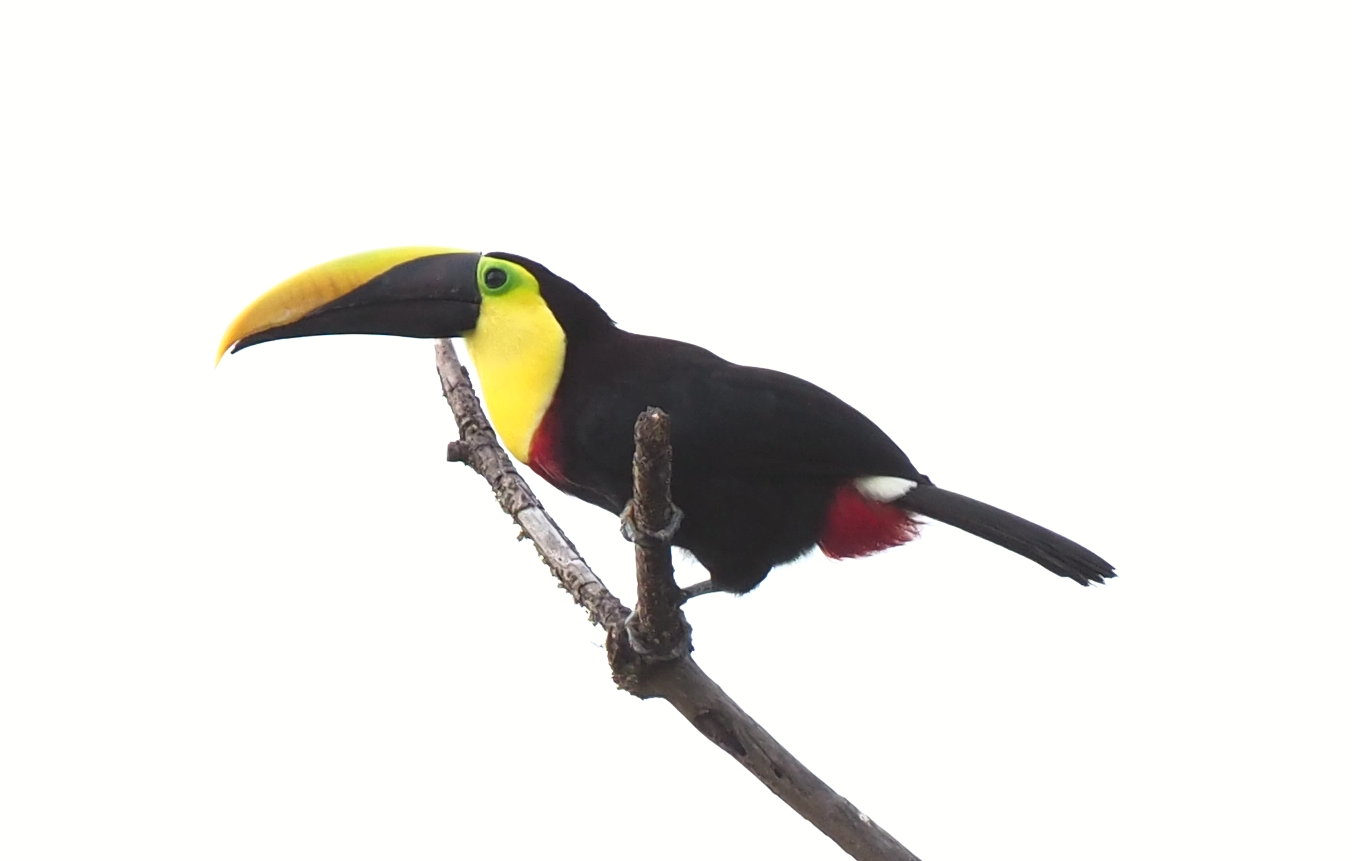Into the Heart of Chocó: A Toucan Odyssey Through Colombia's Biodiversity Hotspot
Journey with us into the Chocó biogeographic region, where the haunting calls of Yellow-throated Toucans echo through one of Earth's most biodiverse ecosystems.

As the first light of dawn filters through the dense canopy of the Chocó rainforest, a deep, resonant call pierces the morning mist. The unmistakable voice of the Yellow-throated Toucan—Ramphastos ambiguus—announces the beginning of another day in one of the world's most extraordinary biodiversity hotspots.
The Dawn Chorus: Nature's Symphony
Our expedition begins before sunrise, when the forest awakens with a symphony of sounds that few places on Earth can match. The Yellow-throated Toucan's call—a series of deep, croaking notes that carry for miles through the humid air—serves as the conductor's baton for this natural orchestra.
Listen to the authentic call of the Yellow-throated Toucan recorded in the Chocó region
Standing beneath the towering cecropia trees, our small group of birding enthusiasts holds their breath as the forest comes alive. The toucan's call is soon joined by the melodic notes of tanagers, the rhythmic drumming of woodpeckers, and the haunting whistle of the Chocó Tinamou—a sound so rare that many birders travel thousands of miles just for the chance to hear it.
A Biodiversity Hotspot Like No Other
The Chocó biogeographic region stretches along the Pacific coast from Panama through Colombia and into Ecuador, but it's in the Colombian Chocó where this ecosystem reaches its most spectacular expression. With over 11,000 millimeters of annual rainfall in some areas, this is one of the wettest places on Earth—a fact that has given rise to an explosion of life found nowhere else on the planet.
"In the Chocó, every tree is a universe unto itself, hosting dozens of species of epiphytes, insects, amphibians, and birds. It's not just about the numbers—it's about the intricate web of relationships that have evolved over millions of years."
The statistics are staggering: the Chocó contains more than 25% of Colombia's bird species despite covering less than 5% of the country's territory. For every square kilometer of forest, researchers have documented an average of 300 bird species—a density of avian diversity that rivals the Amazon while maintaining its own unique character.
Following the Toucan Trail
Our journey deeper into the forest follows ancient indigenous trails, paths that have been used by the Emberá people for centuries. These trails wind through different forest layers, each offering its own birding opportunities and challenges. The Yellow-throated Toucan, our primary quarry, prefers the upper canopy where fruiting trees provide abundant food sources.
Species Spotlight: Yellow-throated Toucan
- Scientific Name: Ramphastos ambiguus
- Size: 47-61 cm (18-24 inches)
- Habitat: Humid lowland and foothill forests
- Diet: Primarily fruits, also insects, eggs, and small vertebrates
- Conservation Status: Near Threatened
- Best Viewing: Early morning and late afternoon in fruiting trees
The toucan's massive bill, which can measure up to 20 centimeters in length, is not just for show. This remarkable adaptation allows the bird to reach fruits on branches too thin to support its body weight, giving it access to food sources unavailable to other species. The bill's bright yellow coloration serves as a signal to other toucans, helping to establish territory and attract mates.
Conservation Challenges and Hope
Despite its incredible biodiversity, the Chocó faces significant conservation challenges. Deforestation for agriculture, mining, and urban development has fragmented much of the original forest cover. Climate change adds another layer of complexity, altering rainfall patterns and temperature regimes that many species depend upon.
However, there is reason for hope. Local communities, conservation organizations, and ecotourism initiatives are working together to protect these vital ecosystems. Our birding expeditions contribute directly to these conservation efforts, providing economic incentives for forest protection while raising awareness about the importance of the Chocó's biodiversity.
The Experience: More Than Just Birding
As our day in the Chocó draws to a close, we reflect on more than just the 127 bird species we've recorded. We've witnessed the intricate dance of a ecosystem in perfect balance, heard the stories of indigenous communities who have been stewards of this land for generations, and felt the profound connection that comes from experiencing one of nature's most spectacular creations.
The Yellow-throated Toucan's evening call echoes through the forest one last time as we make our way back to camp. Tomorrow will bring new adventures, new species, and new opportunities to contribute to the conservation of this irreplaceable ecosystem. But tonight, we carry with us the memory of a perfect day in one of the world's last great wildernesses.